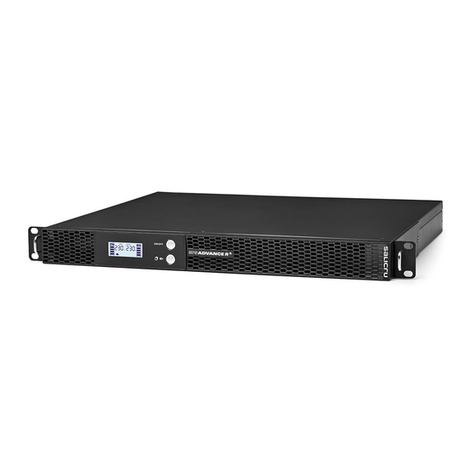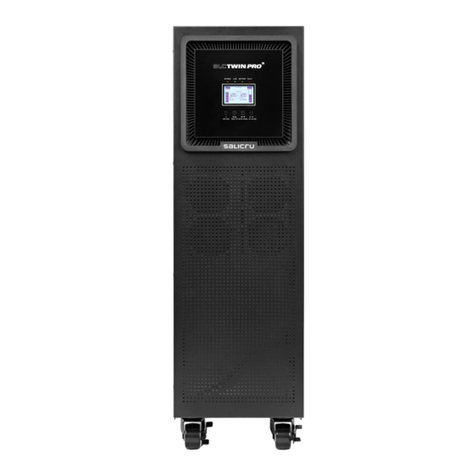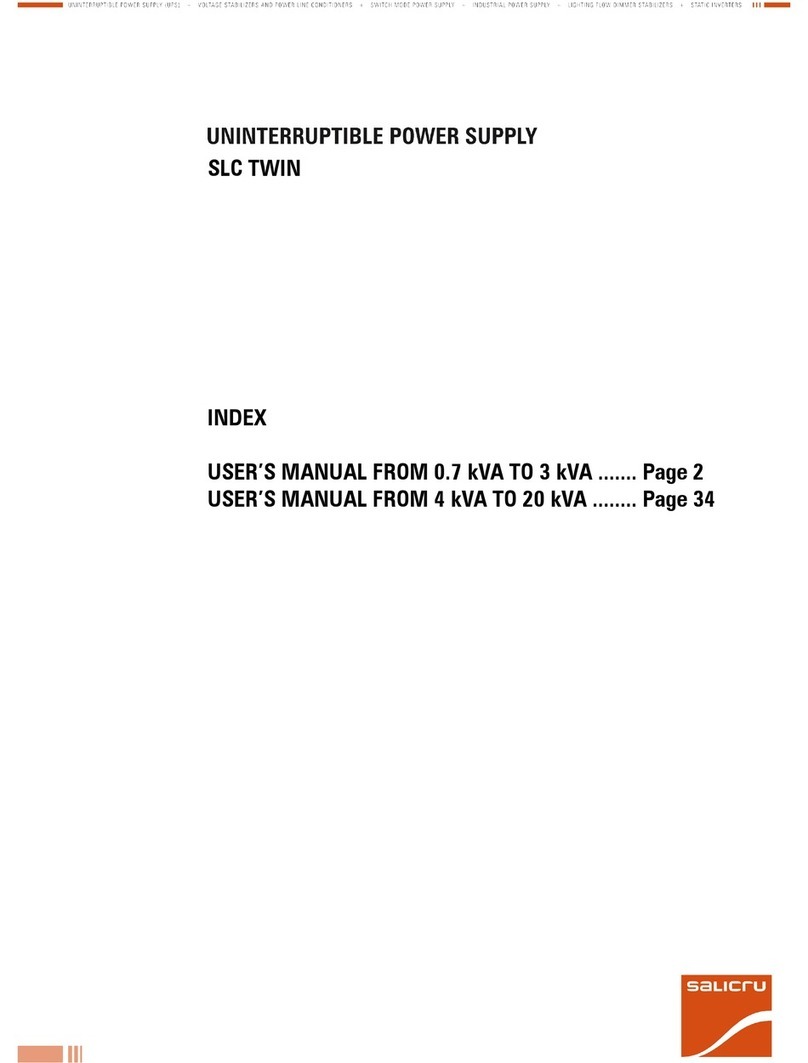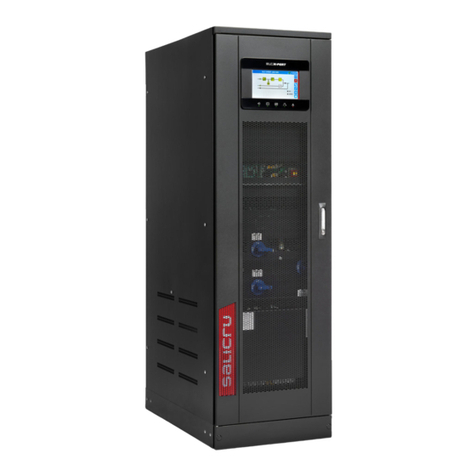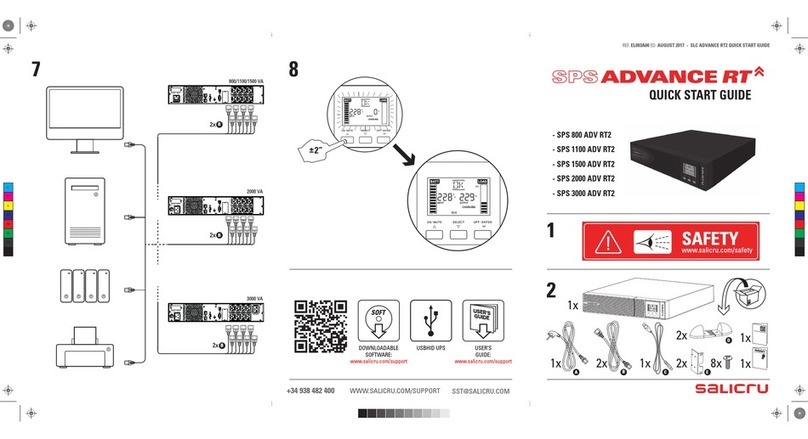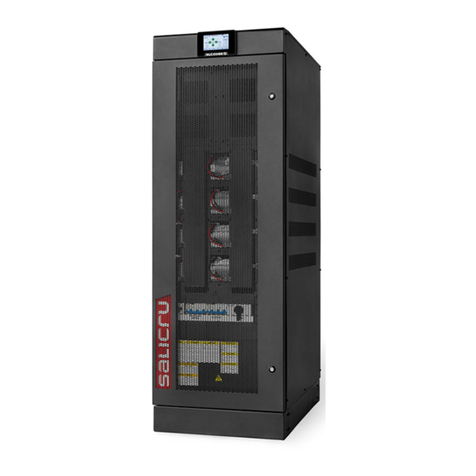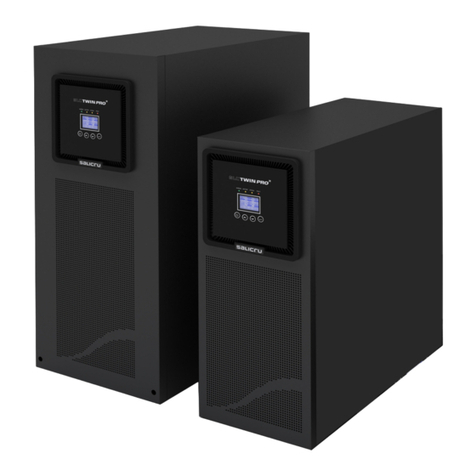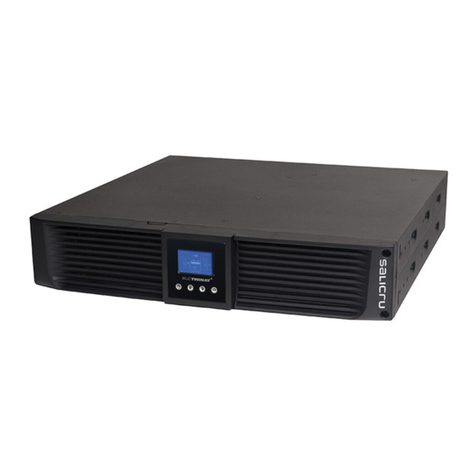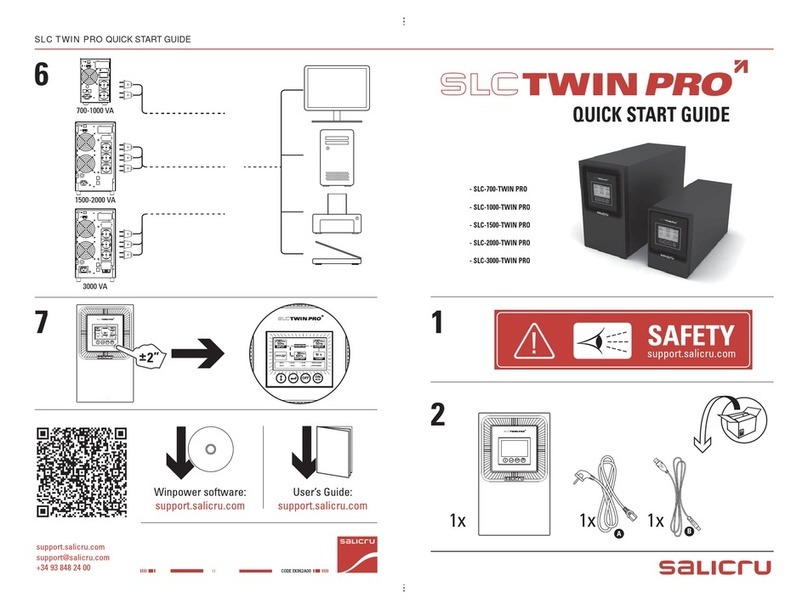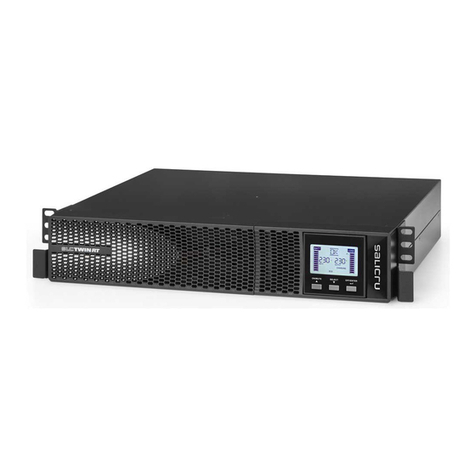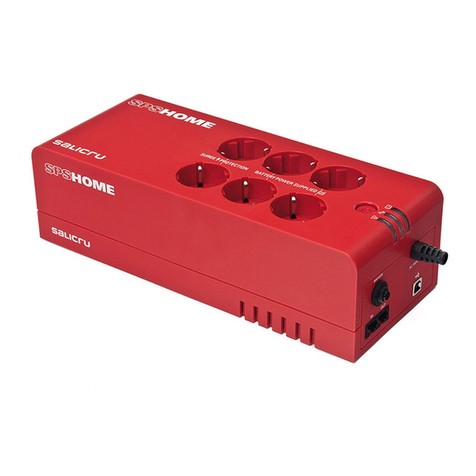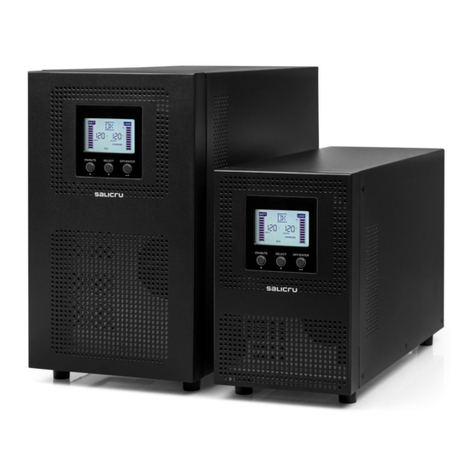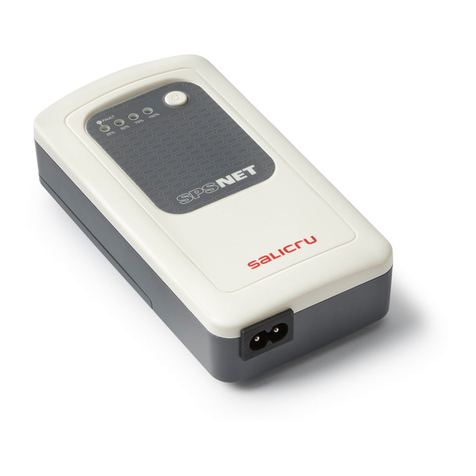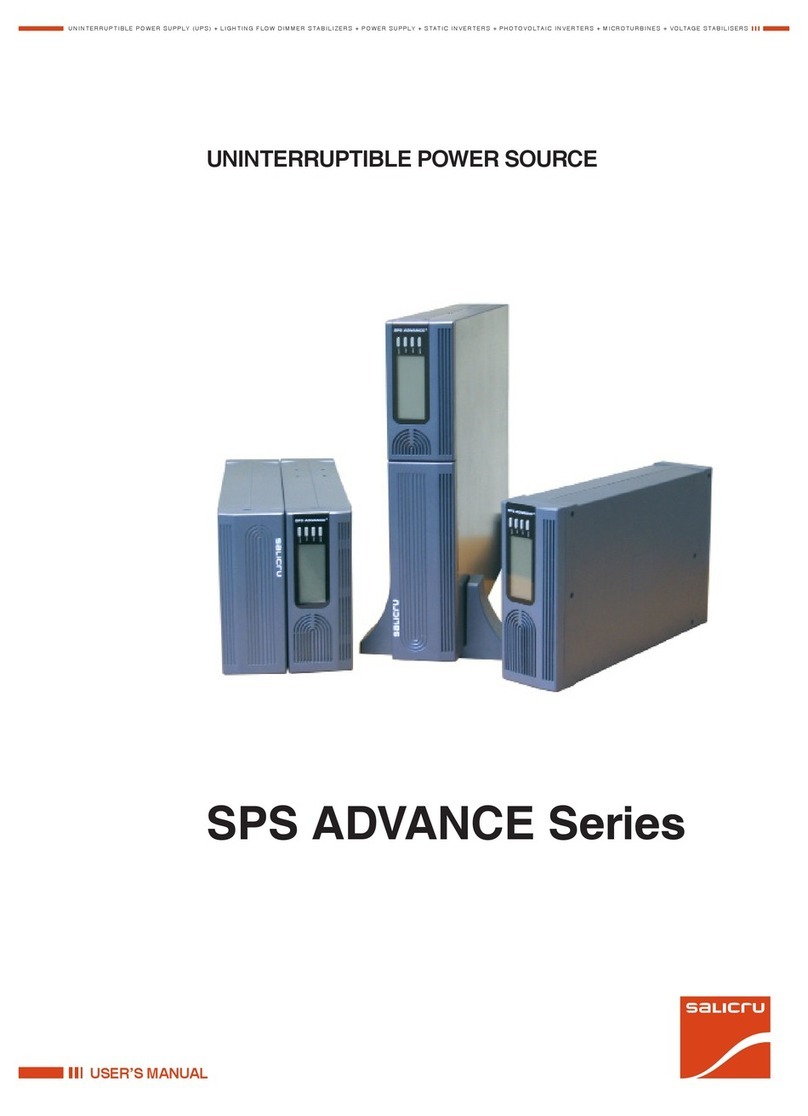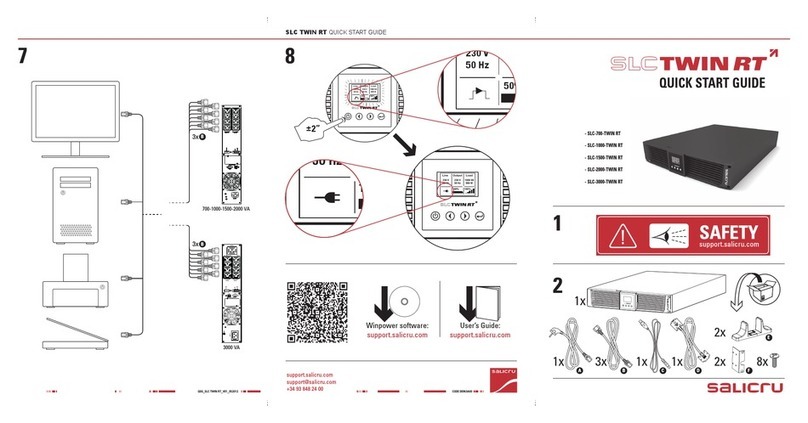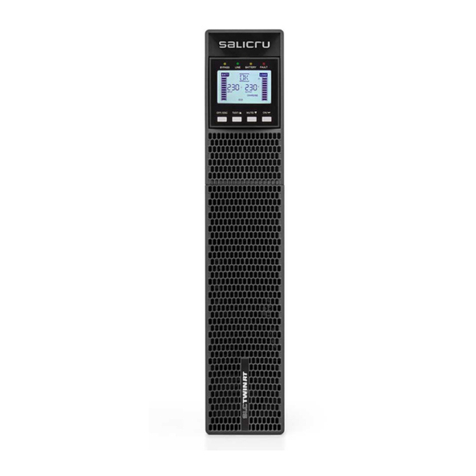- 8 -
Todos los interruptores generales instalados aguas
arriba del SAI debe ser etiquetados con el siguiente
texto: “Aislar el SAI (Sistema de Alimentación
Ininterrumpida) antes de trabajar en este
circuito”.
Paro de emergencia.
ElequipoestáprovistodeE.P.O.(EmergencyPowerOff
-parodeemergencia).Estafunciónseactivapresionando
el botón externo al cual el SAI ha sido conectado. Esta
función desconecta solamente las cargas.
Baterías.
Durantelaelectrólisis,lasbateríasdesprendenhidrógeno
en forma de gas. Existe peligro de explosión si el nivel
de hidrógeno en el local de las baterías es demasiado
alto.Porello,sedebegarantizarunaventilaciónsuficiente
según la normativa EN50091 -1.
Si la temperatura media supera los 25 °C, la vida de la
bateríasereducirá.Eltiempodevidageneralmentese
reduce a la mitad por cada 10 °C de incremento por
encimadelos25°C.Elrangodetemperaturaambiente
ideal se encuentra entre los 15 °C y los 25 °C.
Cualquierbateríainstalada,queseencuentreenbuenas
condiciones, está seca y no presenta ningún tipo de
fuga de líquido corrosivo fuera de su contenedor.
En caso de choques accidentales, inspeccionar las
bateríasdetenidamente!
Unabateríarotapuededesprenderelectrolito,causando
quemadurasenlapiel,corrosiónenelarmariometálico,
degradacióndelacapadepinturaocortocircuitosentre
partes internas del equipo y el electrolito.
Guantes protectores.
Cuando se manipulan baterías dañadas es obligatorio
llevar puestos unos guantes de protección.
Alfombra aislante.
Mientras se trabaja en el SAI, permanecer sobre una
alfombra de goma y utilizar solo herramientas aisladas.
Desprenderse de objetos metálicos.
Mientras se trabajaen el SAI, cualquier objetometálico
tal como relojes, anillos, bolígrafos metálicos, etc.,
debesersustraídoparaevitareventualescortocircuitos
cuando se trabaja en las baterías. Las baterías siempre
tienen tensión y, si se cortocircuitan, pueden fundir
metalesyprovocarotrostiposdedañosodesperfectos.
All primary power switches installed upstream of the
Ups must be labelled as follows: “Isolate UPS
Uninterruptible Power Supply) before working on this
circuit”.
Emergency Power Off.
TheunitisprovidedwiththeE.P.O.(EmergencyPower
Off).Thisfunctionisactivated by pressing theexternal
emergency button to which the Ups has been con-
nected.
ThisfunctiononlyprovidesUpsdisconnection
from the load.
Batteries.
During electrolysis, batteries release hydrogen gas.
Thereisariskofanexplosioniftheamountofhydrogen
inthebatteryroombecomestoohigh.Ensureappropri-
ate ventilation of the battery room according to the
Standard EN50091 -1, to prevent the risk of an
explosion.
If the average temperature in the room exceeds 25 °C
the battery lifetime is greatly reduced. The lifetime is
reducedof1/2 for 10°C temperature raising.The ideal
temperature should range from 15 to 25 °C.
Theinstalledbattery,wheningoodcondition,looksdry
and no corrosive liquid drops out its case.
In case of accidental crash inspect accurately the
batteries!
A broken case can the electrolyte drops out; the latter
can cause burns of the skin, corrode metal cabinet,
finishing coating and fabrics or cause short-circuiting
among the internal parts and the electrolyte.
Protective gloves.
When handling damages batteries it is mandatory to
wear protective gloves.
Isolating carpet.
Meanwhile, hands on the UPS, stand on a rubber
carpet and use isolated tools only.
Strip metal objects.
Meanwhile, hands on the UPS, take off all personal
objects: ring, watch, steel pen, etc. which can cause
short-circuiting when working on batteries. The bat-
teries are always on and, if short circuited they can
fuse metals and cause many damages.

